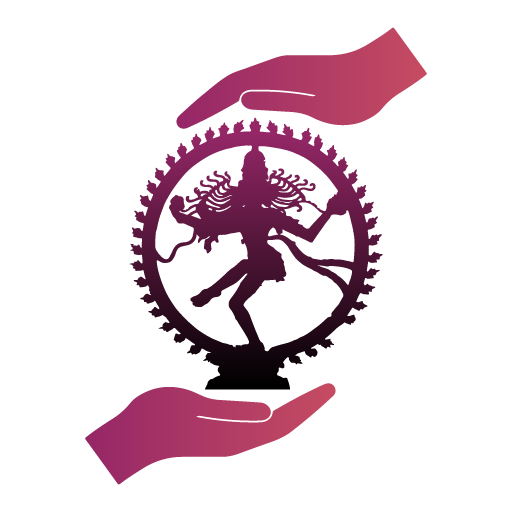A Plateful on the Streets of Delhi
The smell of melted butter, poured over chicken pieces grilled on chunks of coal, fills the air in the lanes of Old-Delhi as one walks through to the Jama Masjid. The juicy Shahi-tukda is a treat for the sweet tooth, and the Chaats of Chandni Chowk provide an unmatched wholesomeness. A bowl of Laphing in Majnu-Ka-Tila in North East Delhi is an acquired taste, more enjoyable with a group of friends. Like the winding streets in the interiors of Delhi, the food here too has its own charm - affordable, varied and mouthwatering. One keeps going back to it, looking for the same tastes, following delicious memories.

Pieces of chicken grilled on coal, Image Source: Flickr

India Gate, Delhi, Image Source: Flickr
Delhi has been the center of power for centuries, and more so a center of exchange of cultures. It is the city of cities, with people tracing it back to the time of our ancient Epics. It has seen the rule of the Tomars, followed by the Chauhans. Laal Kot, extended later to be called the Qila Rai Pithora of Prithvi Raj Chauhan had been a seat of control in the early medieval times. With the coming of the Sultanate dynasties, the urban centers of Mehrauli, Siri, Tughlaqabad, Jahapanah, Purana-Qila and Firozabad were established. Shahjahanabad of the Mughals is still one of the most vibrant places in the city, and Lutyens’ New Delhi preserves the heritage of colonial architecture. After Independence, it was again Delhi that became the capital of the new Nation of India. One stands today on the streets of the city and feels like being placed at a juncture of eras. When planes fly over the Qutub, one stands astounded to witness the overlapping centuries in the heart of history.
A part of its rich heritage is the ever-evolving, composite cuisine of Delhi. Like its history, the food too is evidence of its generations of interacting cultures. With the people that came into the city, came their eating habits. Through their local culinary styles, they tried to retain ties with their places of origin, and today these recipes thrive along the streets of Delhi. Another interesting food culture comes from the growing demands of the students of the colleges in the city, enjoying meals and cups of tea on the stalls by the roadside. More than what is served within the walls of the AC restaurants, it's thus the flavours of the street food of Delhi that is known throughout the country. It is also the street food that while providing essential daily nutrition at low rates to many, also sustains the families of the vendors.
The older, the tastier - Along the curves of the streets in Purani Dilli
This food journey of Delhi needs to begin with the walled city of Shahjahanabad built near the Yamuna - Old Delhi or Purani Dilli. In this context, the story of Emperor Shahjahan’s personal physician, who seemed upset with the water of the Yamuna, is worth mentioning. After the completion of the walled city, the physician warned the Emperor that anyone who consumed the water of the river would eventually fall sick. As a solution to it, he prescribed spicy food and ghee to the people. The non-vegetarians used these with their meat, while the vegetarians made their Chaats spicy. Those that could not afford ghee, started preparing Nihari, where the meat is allowed to cook in its own fat for hours. Today the street food joints of Delhi serve some of the most lip-smacking spicy chaats, and meat dripping with ghee. One of the best Nihari is served in Shabrati Nihari Wale near the Jama Masjid.

A vendor selling Chaat, Image Source: Flickr

Khameeri Roti ready to be served, Source: Flickr
With Nihari, Khameeri Roti, made of flour mixed with yeast, is a must. This style of kneading the dough travelled to India from Central Asia with its people in medieval times, and the Khameeri Roti today is especially known for its softness. By mixing flour, milk, ghee and sugar in different proportions, we get another range of Rotis like Sheermal, Bakarkhani and Kulcha. Unlike the Khameeri Roti, these are preferred without meat or other accompaniments. Similarly, Parathas too are a delicacy on their own, yet in the Parathe-wali Gali, a pumpkin Sabji is always served to further enhance the Paratha experience. Serving more than forty different types of Parathas now, this street has stood witness to many meetings of the Indian Freedom Fighters before 1947. After these intense political meets, Parathas fried in Desi Ghee were a well-deserved refreshment.

A plate of Sheermal, Image Source: Wikimedia Commons

A plate of Parathas in Parathe-wali Gali, Image Source: Wikimedia Commons

Stuffed Kulcha, Image Source: Wikimedia Commons
When around the Paranthe-wali Gali, the cloudy-white Daulat-ki-chaat is not to be missed in the winters. Unlike the other chatpata Chaats of Chandni Chowk that range from Aloo chaat to Raaj Kachori Chaat and Dahi Bhalla Chaat, Daulat-ki-chaat is sweet. This winter delicacy is prepared by keeping sweetened milk overnight out in the open to catch the dew. As per legends, it has to be prepared specifically on a moonlit night. For summers a go-to dish is the chilled Rabri Falooda served at Giani-di-Hatti. Giani Gurucharan Singh had established his dessert shop in the 1950s and today Giani’s is a famous ice cream chain in Delhi. But, the Rabri Falooda of the first shop on the Church Mission Road in Chandni Chowk is still the most loved and the best known. Another treat during the scorching summers is Kuremal Mohanlal Kulfiwale’s stuffed fruit Kulfis. Around a hundred years old, this Kulfi shop in Chawri Bazar sells a wide range of unique stuffed Kulfis - Jamun Kulfi, Aam panna Kulfi, Khajoor Kulfi and what not. These are indeed real fruits, stuffed with Kulfi made of their pulp, and frozen.
Besides these, the flavours and aromas of the walled city’s food is all carried on the shoulders of its khomcha-wallas. In their baskets, they carry the taste of history and make heritage accessible to all. Their Chaats, Tikkis and a range of other food items are what keeps the memories of a shared past vividly alive.

Daulat-ki-chaat, Image Source: Flickr

Mango Kulfi in a bowl, Image Source: Flickr

Colourful Rabri Falooda, Image Source: Wikimedia Commons
Streets for the students - Beside the college buildings of North Campus
Bidding farewell to our khomcha-wallas of Old Delhi, let us move to the area where the North Campus of the University of Delhi is located. An abundance of food joints adorn the streets here. From Honey Chilli Potato, to Hakka Noodles, American Chopsuey and Spring Rolls to Cheese Maggi, one can have a heavy meal within a tight budget. Cups of crisp Garam Chai await the students right outside their colleges. A plate of spicy Chilli Chicken near Patel Chest Institute for Lunch, followed by a full glass of Oreo Shake is more than filling. Often broke and hungry, for the students in North Campus street food is a saviour. Small joints catering to the demands of the students, do not limit themselves to the food derived from age-old recipes as on the streets of Old Delhi. This is a new mosaic of cuisines, where one can get the best Indian style “International Food” - Fried Rice and Noodles made with plenty of tomato and soya sauce, white sauce Pasta with sweet corn - giving the students a desi taste of the world in affordable plates. A little trip to the Tibetan refugee area of Majnu-Ka-Tila is rewarding for its many food-items, among which are the momos and Laphing on its meandering streets. Laphing is an unusually delicious pale yellow, broad noodle-like Tibetan dish that can be had with or without soup. One can customise the amount of garlic sauce and chilli one wants to add to it.

A glass of Oreo Milk Shake, Image Source: Flickr

Honey Chilli Potato, Image Source: Flickr
In the heart of the city - Amidst the busy streets of Janpath and Rajeev Chowk
The last stop of our limited Delhi street food tour is Janpath and Connaught Place or Rajeev Chowk. Unlike the other two areas, this has important office buildings and one can see people rushing around in their formals at any time of the day. While expensive restaurants and cafes envelop the place, the street food here still remains unbeatable. Carrying their worlds in their cycle carriers, Samosa-Wallas sell both mini and big Samosas with Chutney and Sabji. Kachoris are available with them too, and they have fixed times at which they go to the different office buildings here to sell these much-needed bites of relief to the employees. Many of these vendors carry with them baskets of the famous Ram-Laddus. These are yellow lentil balls served with mint Chutney and grated Radish. The other variety of Ram-Laddu is a small ball of tamarind with pomegranate seeds, which is relished equally by everyone.

A vendor selling Aloo Chaat in Rajeev Chowk, Image Source Wikimedia Commons

A Vendor selling Ram-Laddu, Image Source: Flickr
Near Scindia house, Bhogal Chole Bhature satisfies the hunger for Kulchas, Chole Bhature and Chole Chawal anytime between ten in the morning and three in the afternoon. Topped with kofta, the chickpea Chole is a spicy delight to the taste buds. If one is looking for flavourful and fresh fruit chaats, Pappu Chaat Bhandar at the Kharak Singh Marg is a stop to make. Fresh fruits cut into small pieces are mixed with a special Chaat Masala prepared by the owner and served with perfection. A little further towards the President’s House is the famous Pandey Paan Shop that has had the legacy of serving Paan (betel leaves) to the Presidents of India since Independence. One gets a huge variety of Paans here filled with nuts, rose petals, herbs, berries, and even chocolate! In the summers one may also find the season’s special Paans stuffed with mango pieces. These are wrapped in shiny papers and served in little boxes.

Chole Bhature, Image Source: Wikimedia Commons
The city that never fails to amuse, the city that has held thousands of years of history deep in its heart, is Dilli. This is a city that belongs to everyone, and its street food especially keeps that character intact. There is much more to a food tour in Delhi and perhaps it will require volumes of writing to cover it completely. This essay is limited in its scope, but here is hoping that it could enthuse the readers to venture out into the streets for some gastroliscious times.
 Government of India
Government of India

































 Recognizing the ongoing need to position itself for the digital future, Indian Culture is an initiative by the Ministry of Culture. A platform that hosts data of cultural relevance from various repositories and institutions all over India.
Recognizing the ongoing need to position itself for the digital future, Indian Culture is an initiative by the Ministry of Culture. A platform that hosts data of cultural relevance from various repositories and institutions all over India.